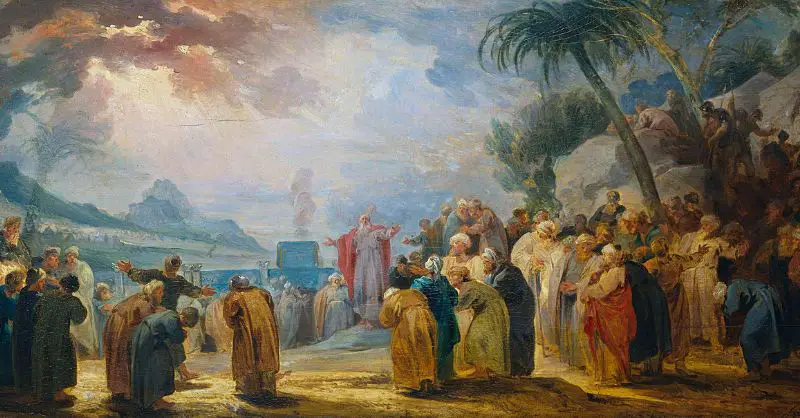Moses is a central figure in the Abrahamic religions, particularly in Judaism, Christianity, and Islam. Known as a prophet, leader, and lawgiver, his story is documented primarily in the Hebrew Bible’s Book of Exodus. This article will explore the life and legacy of Moses, delving into the significance of his role in religious history and the impact of his story on faith and culture.
Who is Moses?
Moses is a prophet and central figure in the Hebrew Bible, particularly in the Book of Exodus. According to biblical accounts, Moses was born in Egypt during a time when the Israelites were enslaved. He was adopted by the Pharaoh’s daughter and raised as an Egyptian prince. Later, he was called by God to lead the Israelites out of Egypt, receiving the Ten Commandments and guiding the Israelites through the wilderness to the Promised Land.
Key Events in Moses’ Life
Birth and adoption: Moses was born to an Israelite family during a period when the Pharaoh had ordered the killing of all Hebrew male infants. To save his life, his mother placed him in a basket and set him adrift on the Nile River, where he was discovered by the Pharaoh’s daughter and raised in the Egyptian royal court.
Encounter with God: After fleeing Egypt due to a violent incident, Moses encountered God in the form of a burning bush on Mount Sinai. During this encounter, God appointed Moses to lead the Israelites out of Egypt and into the Promised Land.
The Ten Plagues and the Exodus: Moses confronted the Pharaoh, demanding the release of the Israelites. When the Pharaoh refused, God sent Ten Plagues upon Egypt. After the final plague, the death of the firstborn, the Pharaoh relented and let the Israelites leave Egypt. This event is commemorated in the Jewish festival of Passover.
Parting of the Red Sea: According to the biblical account, the Pharaoh changed his mind and pursued the fleeing Israelites. Moses, with God’s help, parted the Red Sea to allow the Israelites to escape, and the waters closed in on the pursuing Egyptian army, drowning them.
The Ten Commandments: While wandering in the wilderness, Moses received the Ten Commandments from God on Mount Sinai. These laws form the foundation of Jewish and Christian ethics and religious practice.
Death and legacy: Moses guided the Israelites through the wilderness for 40 years but was not permitted to enter the Promised Land himself. He died on Mount Nebo, and his successor, Joshua, led the Israelites into the land of Canaan.
The Significance of Moses in Religion and Culture
Moses is a central figure in Judaism, Christianity, and Islam, and his story has had a profound impact on religious beliefs, values, and practices.
- Judaism: Moses is considered the most important prophet in Judaism. He is regarded as the receiver of the Torah and the embodiment of Jewish law, and his leadership during the Exodus from Egypt is celebrated during the Passover holiday.
Christianity: Moses is also revered in Christianity as a precursor to Jesus Christ, with the Ten Commandments serving as the foundation for Christian ethics. Moses’ life and prophetic role are seen as foreshadowing the coming of Jesus.
Islam: In Islam, Moses (known as Musa) is considered one of the most important prophets and is mentioned frequently in the Quran. Muslims view him as a messenger and servant of God who played a crucial role in revealing divine wisdom to humanity.
Cultural influence: Moses’ story has transcended religious boundaries and permeated popular culture, inspiring numerous works of art, literature, and film. Notable examples include Michelangelo’s Moses sculpture and Cecil B. DeMille’s classic film, The Ten Commandments.
Conclusion
Moses is a pivotal figure in the Abrahamic religions and a central character in the Hebrew Bible, known for his leadership, prophetic role, and legacy as a lawgiver. His life and teachings have had a lasting impact on religious beliefs, values, and practices across Judaism, Christianity, and Islam. The story of Moses has also permeated popular culture, inspiring countless artistic and literary works, demonstrating the enduring influence and relevance of this biblical icon.
Author

Alona Smith is a devoted follower of Jesus Christ who believes that life’s true purpose is found in knowing Him and making Him known. She is passionate about sharing God’s Word with clarity and compassion, helping others see the beauty of the gospel of grace revealed through the Apostle Paul.
Grounded in Scripture and led by the Spirit, Alona seeks to live out her faith in practical ways—showing kindness, extending forgiveness, and walking in love. Whether serving in her local church, encouraging a friend in need, or simply living as a light in her community, she strives to reflect Christ in both word and deed.

